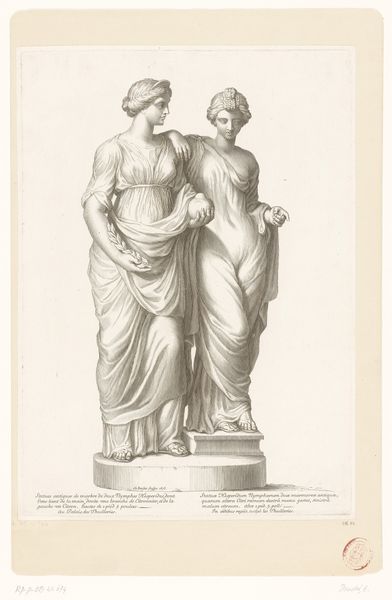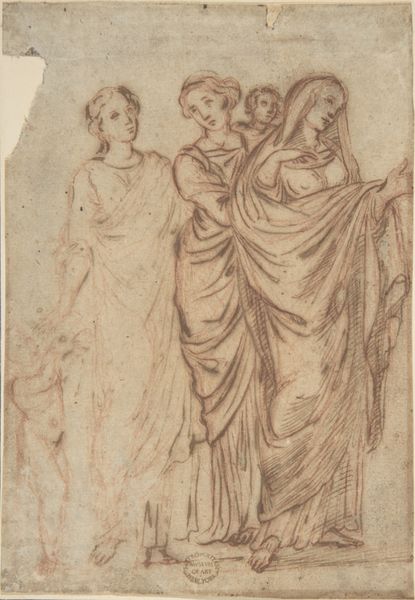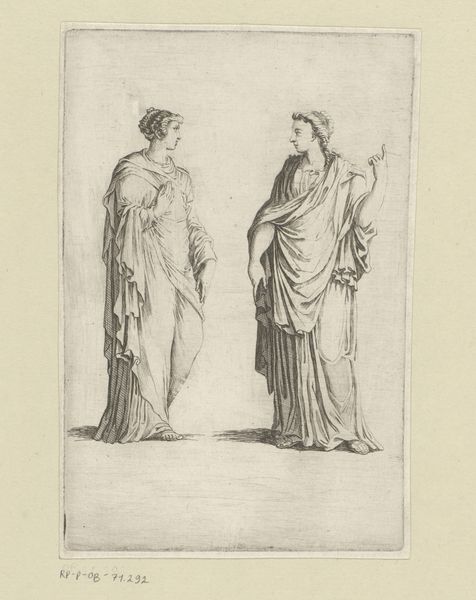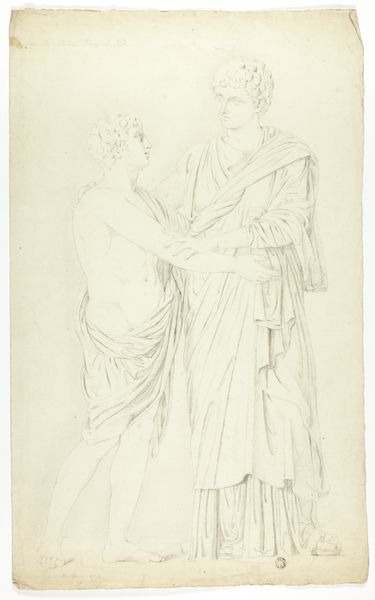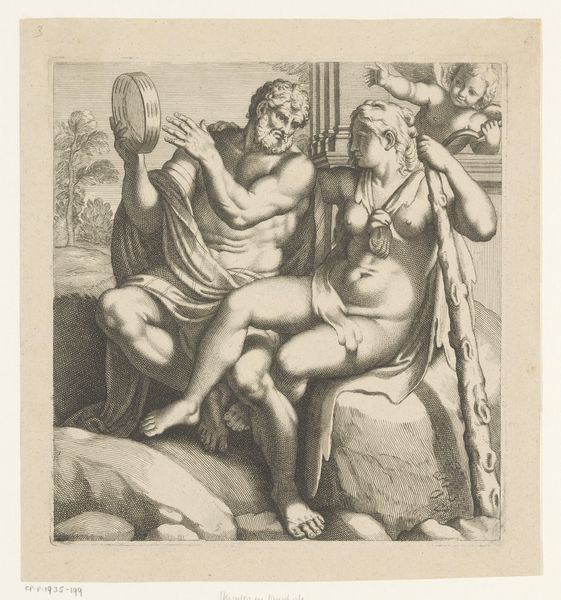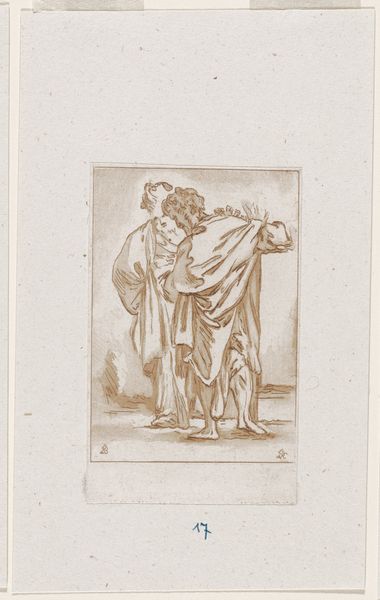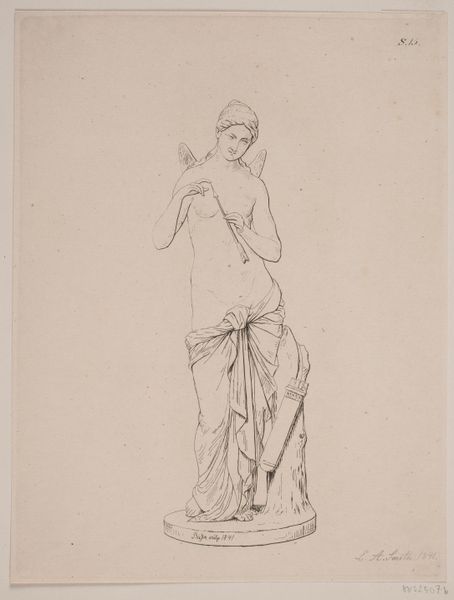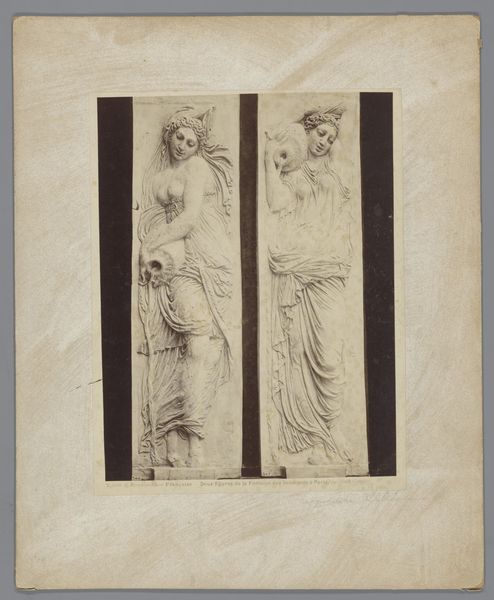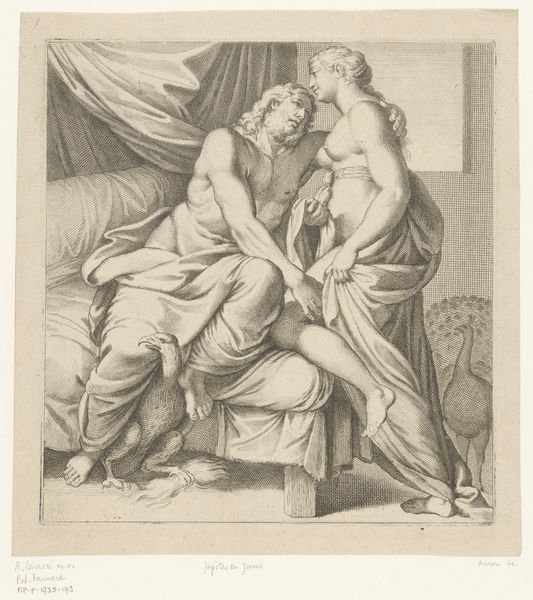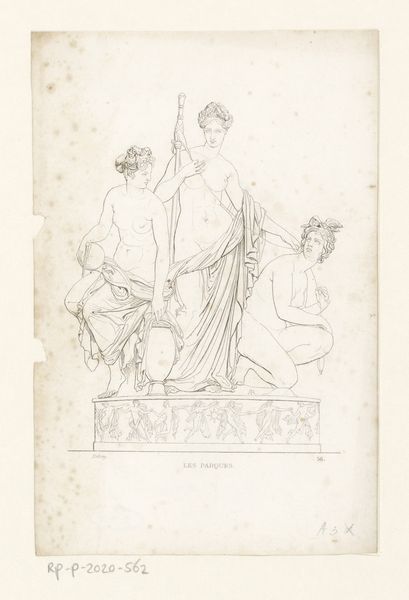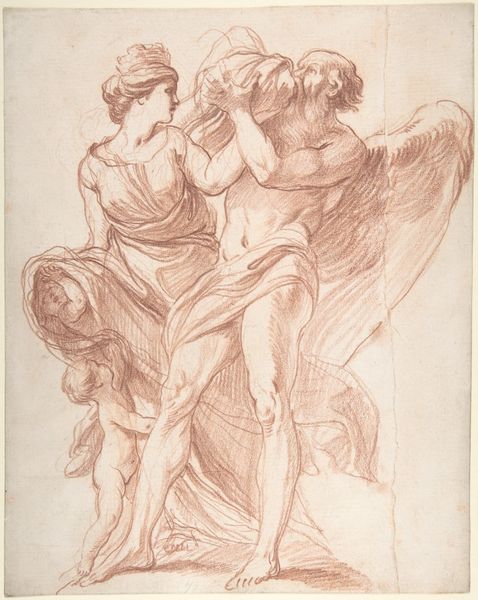
drawing, ink, indian-ink, pencil
#
portrait
#
pencil drawn
#
drawing
#
neoclacissism
#
pencil sketch
#
classical-realism
#
figuration
#
ink
#
pencil drawing
#
indian-ink
#
pencil
#
sketchbook drawing
#
portrait drawing
#
history-painting
#
academic-art
Copyright: Public Domain
Curator: Here we have Johann Heinrich von Dannecker’s “Clio and Melpomene,” a drawing rendered circa 1800. It's currently held at the Städel Museum. It employs pencil and ink, quite delicately, I must say. Editor: My first thought? Melancholy, like a muted song. There’s a gentleness to the lines, yet an undeniable seriousness in their expressions. They almost seem to be sharing a secret. Curator: Indeed. Dannecker here depicts two of the nine Muses from Greek mythology. Clio, on the left, represents history. Melpomene, on the right, is traditionally the Muse of tragedy. Editor: The tragedy part definitely rings true. Look at how Clio is leaning in, almost seeking comfort, while Melpomene gazes upward with this almost sorrowful look, that theatrical mask perched on her head as if weighing her down. It makes you wonder what story they’re contemplating, doesn't it? Curator: Absolutely. The Neoclassical period was heavily influenced by antiquity, where such figures embodied abstract concepts in accessible human forms. The mask is, of course, symbolic of theatre itself. Editor: It's as if Dannecker wanted to explore the fine line between remembrance and dramatic retelling. How the simple recording of events invariably morphs into a heightened narrative, tinted with emotion. They appear burdened, almost. It's a stark departure from simple celebration of Greek myth. Curator: A fascinating take. One might say it speaks to a certain enlightenment anxiety. As knowledge grew, perhaps so did the burden of history and awareness of inevitable tragedy. Editor: Or maybe, he just wanted to depict their coffee break chit-chat! “Oh, Clio, another empire fell, pass the nectar, please!" Jokes aside, I do appreciate that it moves beyond the ornamental and evokes genuine pathos. Curator: That is the beauty of such works—layer upon layer of meaning for centuries. It resonates because it transcends any singular reading, connecting the past to our very human present. Editor: Precisely. From casual pencil strokes to weighty historical discourse, Dannecker’s drawing serves as both artefact and emotional mirror. A quiet moment captured with resonant depths.
Comments
No comments
Be the first to comment and join the conversation on the ultimate creative platform.
